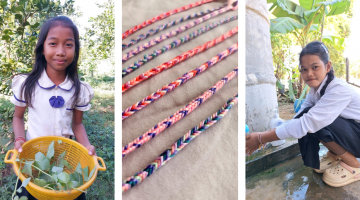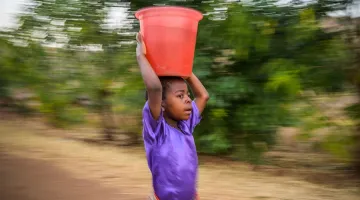Syrian Refugees In Crisis
Over nearly 5 years fighting in Syria has reportedly killed 220,000 – 76,000 last year alone. More than 4 million people have fled the country and 7.6 million are displaced in Syria. More than half are children.
Below are some fast facts about the crisis and an overview of the conflict in Syria, its impact on children, the refugee situation, and how we are helping.
Fast facts
- Nearly 12 million Syrians have been forced from their homes by the fighting; half are children.
- At least 7.6 million have been displaced within Syria, and more than 4 million have fled as refugees in neighboring countries.
- Increasing numbers of refugees are making dangerous attempts to reach Europe. About 51 percent of them are from Syria, the UN Refugee Agency says.
- Children affected by the Syrian conflict are at risk of becoming ill, malnourished, abused, or exploited. Millions have been forced to quit school.
- Since the beginning of this crisis, World Vision has helped more than 2 million people in Syria, Lebanon, Jordan, and Iraq.
- In response to the migration toward Europe, we are now also providing aid in Serbia.
What are the refugees’ greatest needs?
Refugees need food, clothing, health assistance, shelter, and basic household and hygiene items. They need reliable supplies of clean water, as well as sanitation facilities. They’ll need warm clothing, heaters, and heating fuel to get through the coming winter months.
Children need a safe, protective environment and a chance to play and go to school. Adults need employment options in case of long-term displacement.
What risks do children face?
Children are especially susceptible to malnutrition and diseases related to poor sanitation. Many suffer from diarrheal diseases and dehydration.
Children are more vulnerable to sexual abuse and exploitation in unfamiliar and overcrowded conditions. Without adequate income to support their families and fearful of their daughters being molested, parents — especially single mothers — may opt to arrange marriage for girls as young as 13.
"We know from experience they are vulnerable to trafficking, forced labour, prostitution and other forms of violence. Further, with Serbia’s harsh winter fast approaching, they lack adequate food, clothing and shelter,” Conny Lenneberg, World Vision's Regional Director for the Middle East and Eastern Europe, said..
What is World Vision doing?
In Lebanon, we helped 1.2 million people by:
- providing remedial classes and safe spaces for children to help them catch-up on lost classroom time and restore a sense of normality
- installing water tanks and toilets in makeshift settlements to ensure access to clean water and sanitation
- distributing food vouchers and essential supplies like nappies, cooking equipment and winter clothing
In Jordan, we've reached 600,000 people by:
- providing basic supplies like food, nappies and winter clothing
- constructing water and sanitation facilities to meet the urgent sanitation needs of more than 50,000 people in Azraq, the nee refugee camp built to support the overflow at Za’atari
- rehabilitating roads and drainage at Za’atari refugee camp to keep families safe and dry
- providing remedial classes and child-friendly spaces, helping children catch up on lost classroom time and restore a sense of normality
In Syria, we've helped 300,000 people by:
- establishing or improving access to clean water, sanitation and health care, to keep children healthy and hygienic
- distributing food and winter essentials
Disaster Response Fund
World Vision is prepared with pre-positioned supplies and trained relief staff to respond rapidly to any disaster anywhere in the world. We are often one of the first organisations on the ground with life-saving emergency aid, and we stay for the long term to help families recover and rebuild. The Disaster Response Fund helps us rush emergency supplies like life-saving food, clean water, medical supplies, and shelter to survivors. And helps ensure that we have pre-positioned supplies in place to respond to the next disaster.








